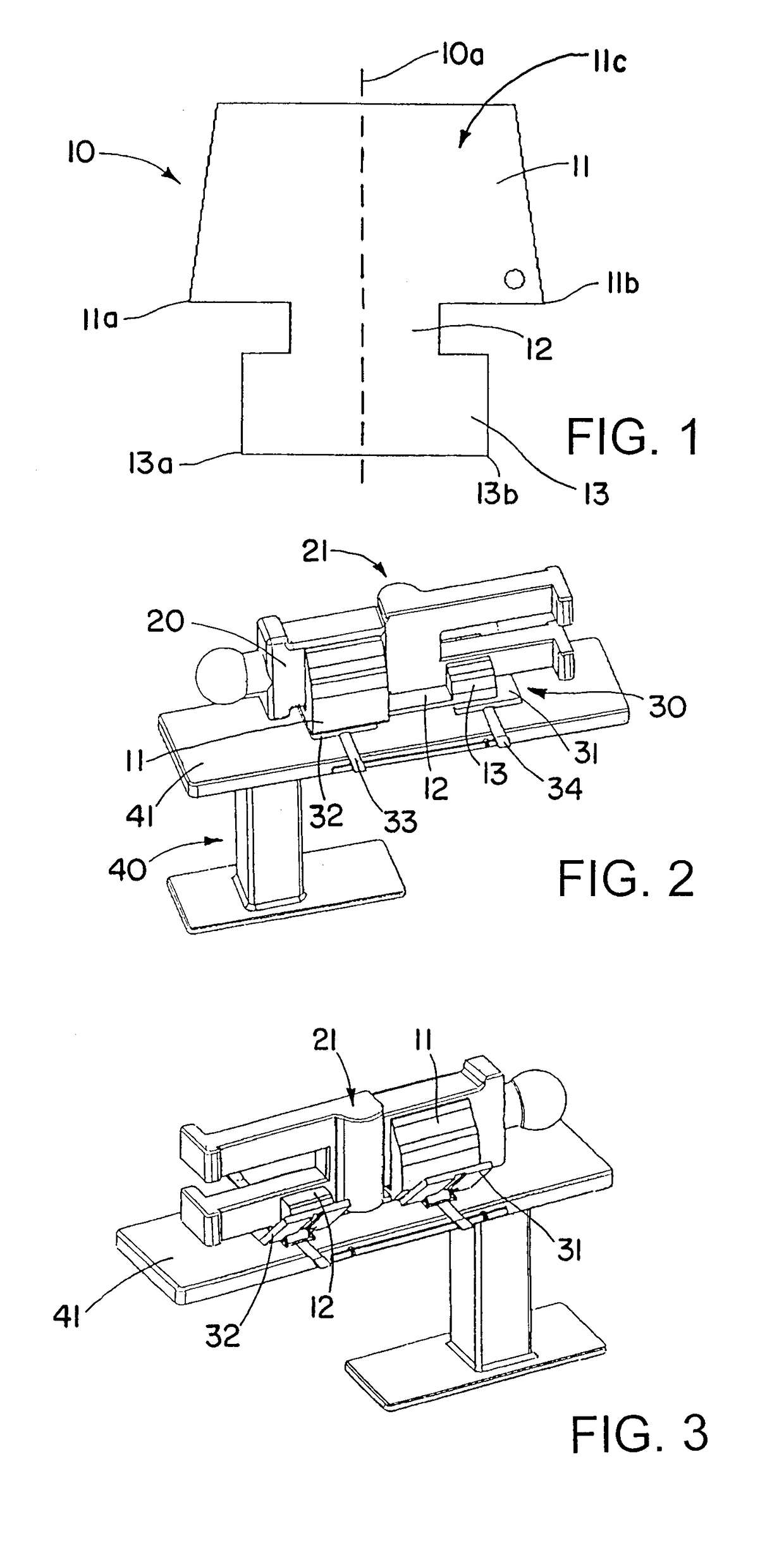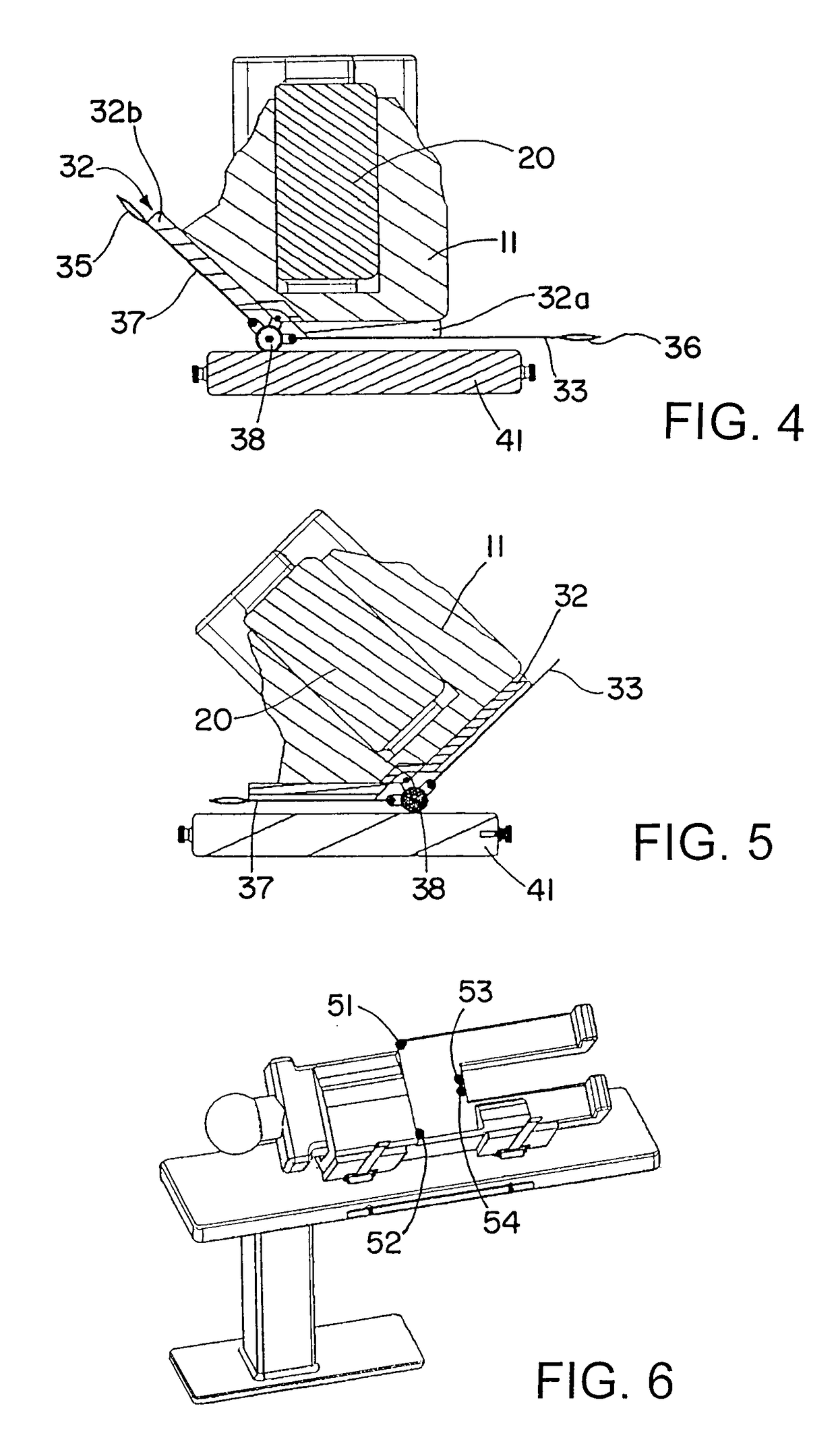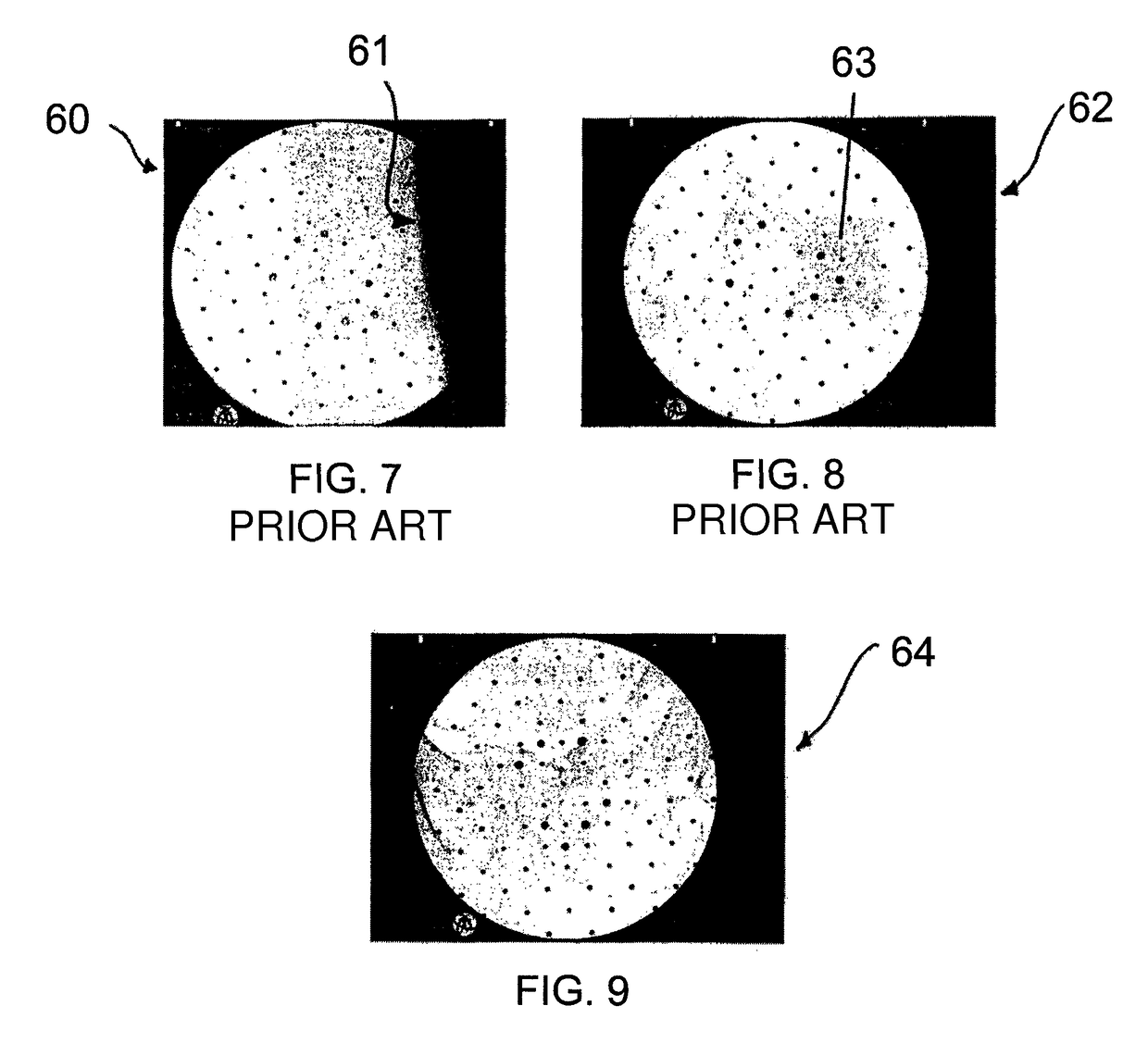Patient lateral positioning device for pelvic treatments comprising a vacuum mattress
a technology of lateral positioning and vacuum mattress, which is applied in the direction of fluid mattresses, sofas, transportation and packaging, etc., can solve the problems of difficult to ascertain navigation information, need to fall back on fluoroscopic registration, shadows and edges on images, etc., and achieves the effect of easy repositioning, quick and easy repositioning, and no loss of sterility
- Summary
- Abstract
- Description
- Claims
- Application Information
AI Technical Summary
Benefits of technology
Problems solved by technology
Method used
Image
Examples
Embodiment Construction
[0030]FIG. 1 shows a view from above (outline) onto an exemplary vacuum mattress 10 for a patient lateral positioning device in accordance with the invention. The exemplary mattress 10 has the basic shape of a Roman numeral I and includes an upper body supporting part 11, a lower body supporting part 13 and a connecting part 12 between said two parts 11 and 13. The patient is laterally positioned onto the central longitudinal axis 10a of the vacuum mattress 10, such that the two wings 11a and 11b of the upper body supporting part 11 can be bent upwards around the upper body, and the two wings 13a and 13b of the lower body supporting part 13 can partly encompass the lower leg from beneath. The air is then removed from the vacuum mattress, and a filler material 11c, such as polystyrene balls, contained in the mattress adapt to the shape of the patient's body and fix the body. The patient is then lying laterally on the operating table as shown in FIGS. 2 and 3. FIG. 2 shows the patient...
PUM
 Login to View More
Login to View More Abstract
Description
Claims
Application Information
 Login to View More
Login to View More - R&D
- Intellectual Property
- Life Sciences
- Materials
- Tech Scout
- Unparalleled Data Quality
- Higher Quality Content
- 60% Fewer Hallucinations
Browse by: Latest US Patents, China's latest patents, Technical Efficacy Thesaurus, Application Domain, Technology Topic, Popular Technical Reports.
© 2025 PatSnap. All rights reserved.Legal|Privacy policy|Modern Slavery Act Transparency Statement|Sitemap|About US| Contact US: help@patsnap.com



